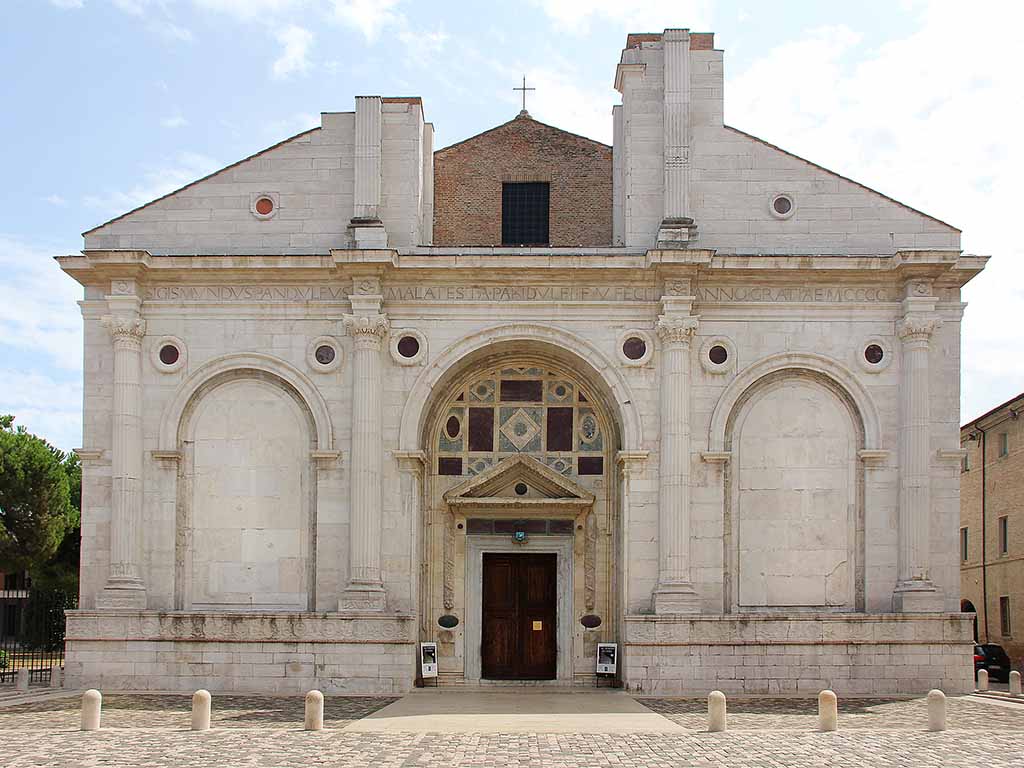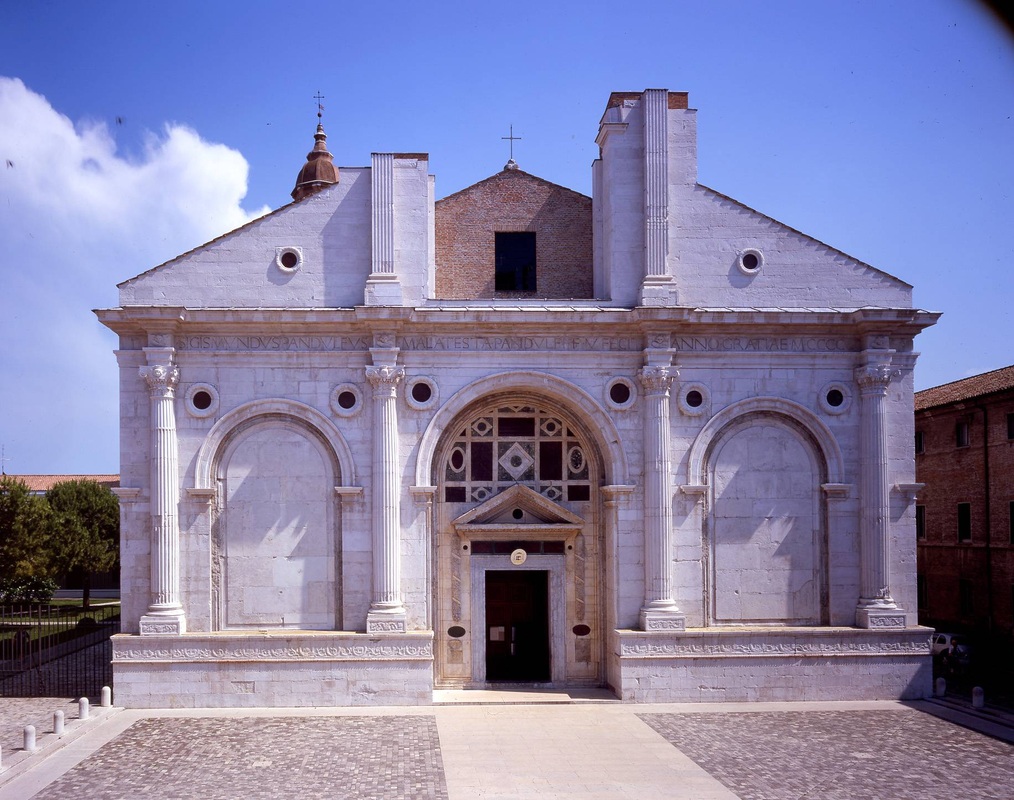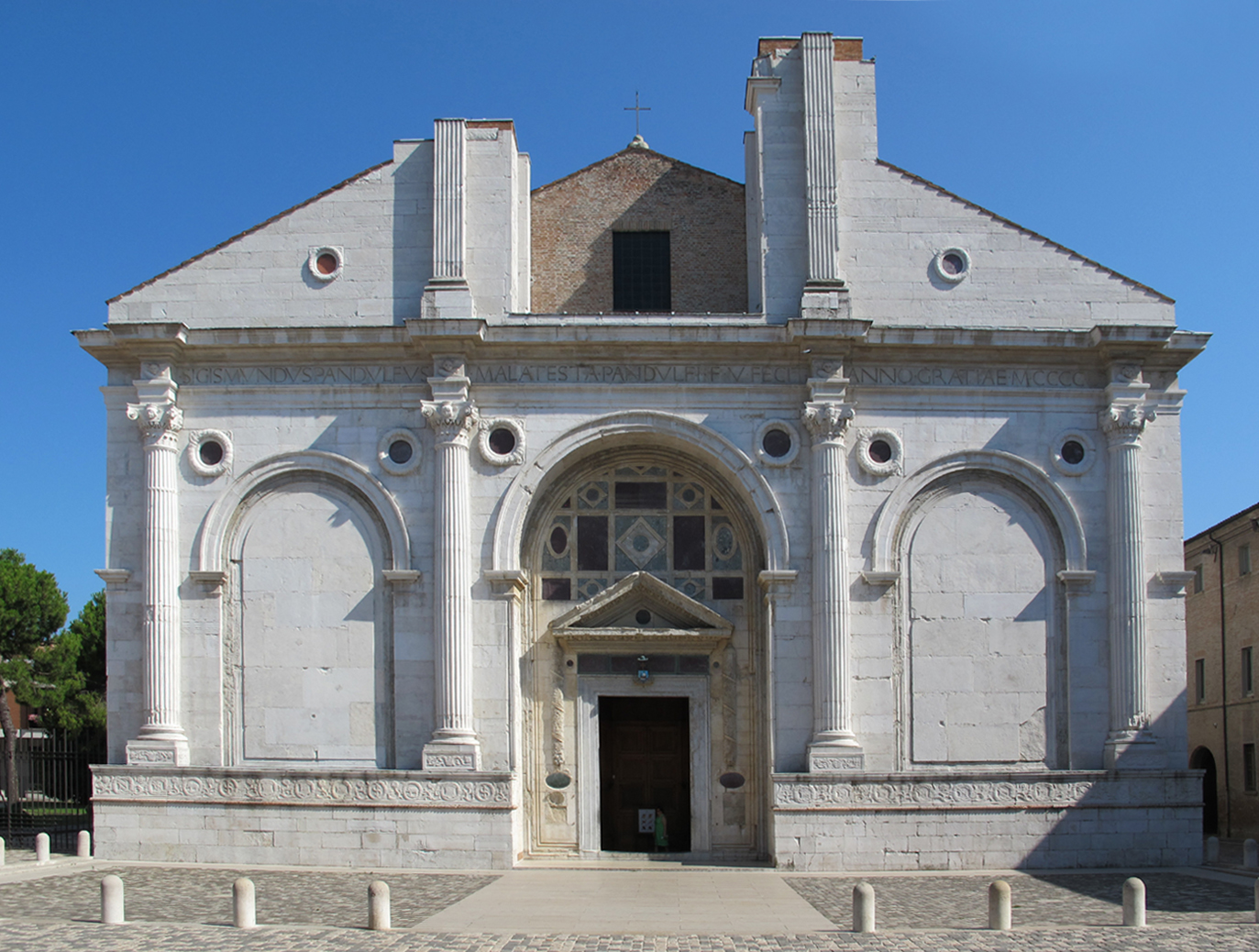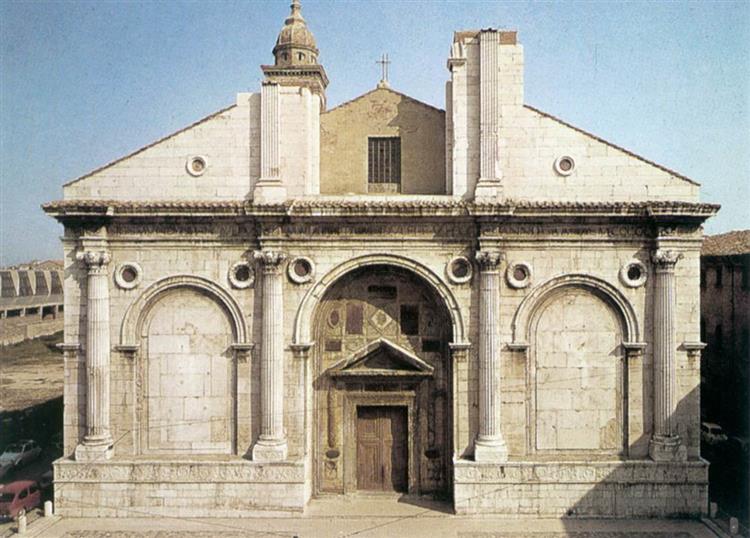Leon Battista Alberti Tempio Malatestiano (před 1450) Renaissance

Tempio Malatestiano Façade by ALBERTI, Leon Battista
'Tempio Malatestiano (Rimini)' was created in 1450 by Leon Battista Alberti in Early Renaissance style. Find more prominent pieces of architecture at Wikiart.org - best visual art database.

Pin on Architectures
Tempio Malatestiano, Cathedral of Rimini is one of artworks by Leon Battista Alberti. Artwork analysis, large resolution images, user comments, interesting facts and much more.. He did not spare the funds of Malatesta and invited to design the temple of Leon to Battista Alberti, who after his death Brunelleschi could be considered the first.

Tempio Malatestiano Façade by ALBERTI, Leon Battista
Leon Battista Alberti (1404-1472 CE) was an Italian scholar, architect, mathematician, and advocate of Renaissance humanism.. Tempio Malatestiano, Rimini by Alberti. Michele1978rimini (Public Domain) In Mantua, Alberti designed two churches of note, San Sebastiano in 1460 CE and the Basilica of San Andrea c. 1470 CE (construction began in.

CategoryTempio Malatestiano Facade Facade, Architecture, Barcelona
Il Tempio Malatestiano è uno degli edifici più famosi di Rimini: realizzato nel corso del XV secolo rappresenta uno dei maggiori esempi di architettura rinascimentale italiana, oltre ad essere la prima opera architettonica mai realizzata da Leon Battista Alberti, una delle figure più importanti nella storia dell'architettura italiana antica e autore del celebre De re aedificatoria, primo.

Leon Battista Alberti, il Tempio Malatestiano 145054
Malatesta hired architect Leon Battista Alberti to build a mausoleum for himself and his wife, Isotta degli Atti. The result was an elaborate and highly decorative monument to this couple, whose initials are emblazoned all over the Tempio Malatestiano. These changes were particularly detested by Pope Pius II, who virulently condemned them.

Pin di Nicola su Arte Architettura, Arte, Architetti
Leon Battista Alberti (Italian: [leˈom batˈtista alˈbɛrti]; 14 February 1404 - 25 April 1472) was an Italian Renaissance humanist author, artist, architect, poet, priest, linguist, philosopher, and cryptographer; he epitomised the nature of those identified now as polymaths.He is considered the founder of Western cryptography, a claim he shares with Johannes Trithemius.

Leon Battista Alberti. Facade and flank, S. Francesco (tempio
The Tempio Malatestiano is the unfinished cathedral church of Rimini, Italy. Officially named for St. Francis, it takes the popular name from Sigismondo Pandolfo Malatesta, who commissioned its reconstruction by the famous Renaissance theorist and architect Leon Battista Alberti around 1450.

Il Tempio Malatestiano di Leon Battista Alberti Villegiardini
Leon Battista Alberti ( Italian: [leˈom batˈtista alˈbɛrti]; 14 February 1404 - 25 April 1472) was an Italian Renaissance humanist author, artist, architect, poet, priest, linguist, philosopher, and cryptographer; he epitomised the nature of those identified now as polymaths. He is considered the founder of Western cryptography, a claim.

Alberti's Work LEON BATTISTA ALBERTI
The Tempio Malatestiano ( Italian: Malatesta Temple) is the unfinished cathedral church of Rimini, Italy. Officially named for St. Francis, it takes the popular name from Sigismondo Pandolfo Malatesta, who commissioned its reconstruction by the famous Renaissance theorist and architect Leon Battista Alberti around 1450.

Tempio Malatestiano a Rimini fotografie
The facade of the Tempio Malatestiano church in Rimini. It was designed by the Italian Renaissance architect Leon Battista Alberti (1404-1472 CE). Mid-15th century CE. Its design is influenced by the triumphal arch of ancient Rome.

Leon Battista Alberti Tempio Malatestiano (EN Malatesta Temple
The achievement of Leon Battista Alberti testifies to the formative power and exhaustive scope of earlier Italian humanism. He owed his boyhood education to Gasparino da Barzizza, the noted teacher who, with Vergerio, was influential in the development of humanism at Padua.Alberti attended the University of Bologna from 1421 until 1428, by which time he was an expert in law and mathematics and.

Leon Battista Alberti Tempio Malatestiano (před 1450) Renaissance
Il Tempio malatestiano, usualmente indicato dai cittadini come il Duomo e dal 1809 divenuta cattedrale col titolo di Santa Colomba, è il principale luogo di culto cattolico di Rimini.Rinnovato completamente sotto la signoria di Sigismondo Pandolfo Malatesta, con il contributo di artisti come Leon Battista Alberti, Matteo de' Pasti, Agostino di Duccio e Piero della Francesca, è sebbene.

Leone Battista Alberti Tempio Malatestiano.jpg Sztuka renesansu
Tempio Malatestiano, burial chapel in Rimini, Italy, for Sigismondo Pandolfo Malatesta, the lord of the city, together with his mistress Isotta degli Atti and the Malatesta family.. 1446, from the Gothic-style Church of San Francesco according to the plans of the Early Renaissance Florentine architect Leon Battista Alberti. Construction was.

17. Templo Malatestiano o San Franciso de Rimini. Remodelación
No matter what you love, you'll find it here. Search Leon battista alberti and more. Find the deal you deserve on eBay. Discover discounts from sellers across the globe.

Tempio Malatestiano, Leon Battista Alberti, Rimini, 1453 Architettura
Malatesta Temple - Tempio Malatestiano. The Malatesta Templ e, Cathedral of the diocese since 1809, is a famous example of Renaissance architecture and maybe the most illustrious monument of Rimini. It was built by Leon Battista Alberti as a precious marble casket around the gothic church of St. Francis. The work, wanted by Sigismondo.

Tempio Malatestiano (Rimini), 1450 Leon Battista Alberti
Tempio Malatestiano. Alberti received the commission to design the Tempio Malatestiano from nobleman Sigismondo Pandolfo Malatesta who intended it to serve as a mausoleum and testament to his love for his future wife,. Battista Alberti (Leon was the name he adopted in later life) was the second (after Carlos) of two illegitimate children.